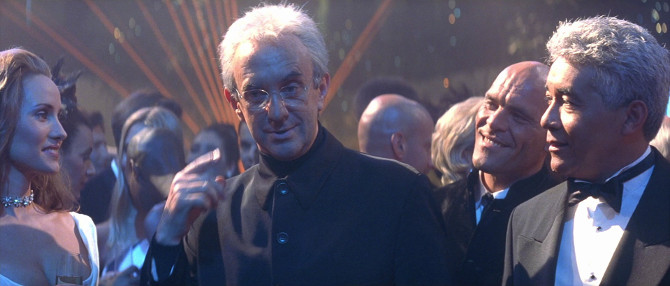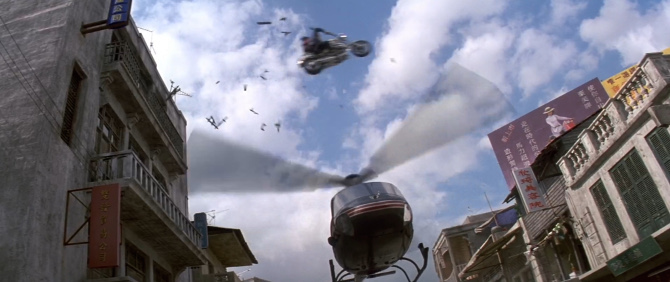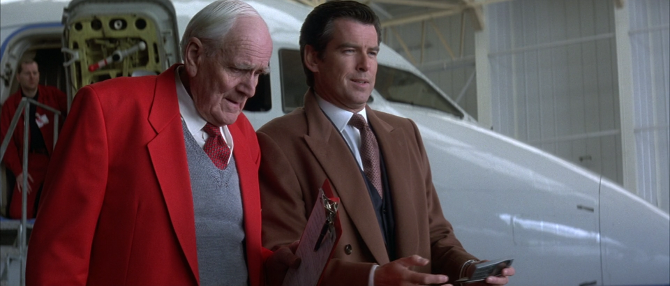‘What Could Have Been’ is a continuing look into the reels of film history, analysing movies that could have been something special, but due to problems with script, production, budgetary, or any other type of issue, did not reach its full potential.
Let me start by saying that every James Bond film, be it ‘good’ or ‘bad’ (for lack of a better term), is special. Since 1962’s Dr. No, Ian Fleming’s famed spy has lit up the silver screen, not only awing and entertaining (for even the most frustrating of Bond films still have those wow moments of action, or those most entertaining one liners), but also holding a magnifying glass up to the then present day – analysing current issues (such as The Cold War, The Space Race, North Korea. . . the list goes on and on). . . understanding when to be more jokey or serious, it is a measuring stick of an historical document that speaks to what was on people’s minds in that specific year.
Now, you might be wondering – why oh why review Roger Spottiswoode’s 1998 film Tomorrow Never Dies – for it is arguably one of the less magical efforts in the franchise. Being a fan of all things Bond, I recently read the film’s novelization, written by Raymond Benson (who wrote three novelizations during the Pierce Brosnan era, as well as six original novels, and three short stories). . . and was quite impressed by how entertaining it was (which didn’t exactly compute with my memories of the film).

A story that brings British super spy James Bond (Pierce Brosnan) up against media mogul Elliot Carver (Jonathan Pryce), the villain, along with his henchman Stamper (Götz Otto), have been able to nab a device that can distort satellite navigation of anything (including ships used by the navy).
Using this device to create chaos between the British and Chinese (as well as utilizing his own nuclear armed personal stealth ship – that cannot be seen on radar), Bond, along with his Chinese counterpart, Wai Lin (Michelle Yeoh), must attempt to decipher this clever ruse before it is too late. . . and the world enters into another conflict – one that Carver can exploit (and profit off of) knowing that it is already coming.
Of course, Bond has had some previous run ins with Carver’s wife, Paris (Teri Hatcher), and by run ins, I mean in the sack. . . further adding to the strife between 007 and the villain of the day. These former trysts bring her into danger, meaning that Bond has his plate full.

The basic story in a nutshell, the film falls flat in a number of areas. Not flowing particularly well, it is over edited, lacks pace, and is missing something (that Bond magic that is in so many of the pictures). After reading the novel, this missing thing truly is. . . an edge. Always looking to achieve that coveted pg-13 rating, the novel explains Carver’s dark back story (something never revealed in the film). . . the illegitimate son of a wealthy media mogul, the man exploits his father, along with Stamper, by way of his mistress (it all ending quite darkly. . . though this can be found in the deleted scenes). And, speaking of Stamper, in the Benson book, he is a psychotic sadomasochist whose only sexual arousal comes through brutal pain (he also enjoys making a good snuff film). . . again, in the movie, none of this is explained – making him a rather lame duck (a guy who is just a bit taller, and stronger, and blonder, than your average bloke). Also, the novel finds the action scenes expanded, making for more dynamic and entertaining fare.
Funnily enough, I gained a better appreciation for the film after reading the novel. Understanding where it was originally going, the villain is no longer doing all of this maniacal stuff for no reason (other than insanity), the henchman is now a well-rounded and rather disturbing villain, and the whole story comes together into a much neater and more sensible package.

Now, as I said before, every Bond film has its moments. Each time Bond meets Q (Desmond Llewelyn), especially in these later efforts (when we know that those times are running short), is extra special. Their interactions, this time revolving around his new BMW, eventually lead to a rather exciting multi-level parking lot car battle – with Q’s new car gadgets aiding the spy in foiling the nameless baddies from vanquishing him. There is also the pre-title weapons bazaar scene. . . over the top fun, it also features a rather clever ‘backseat drivers’ one liner. Another impressive sequence finds Bond and Wai Lin fighting over who will drive a motorbike to escape (an improvised moment created by Spottiswoode). . . this leads to a street and rooftop chase (with a few other wild surprises). Plus, I must say, Wai Lin is a pretty clever Bond girl name. Another cool find for keen-eyed viewers is a young Gerard Butler, who has one line as a Seaman on the Devonshire (at the beginning of the movie). There is also a wonderful cameo from character actor Vincent Schiavelli – as assassin Dr. Kaufman. Then there is the Bond song, a nice little ditty by Sheryl Crow. Lastly, I must say that I’ve always been a supporter of Brosnan’s – a rather interesting mix of all the Bond actors that had come before him (excluding George Lazenby), despite what some others might say, it was some of the ideas and writing in his movies that let him down (that is, after his first – Goldeneye, which was an absolute corker).
Even more impressive is its vision of the future. . . the twenty-four hour news cycle not simply reporting daily happenings, but rather, manipulating stories by way of technology. . . a frighteningly possible scenario some twenty years later in this era of division and targeted – some might say manipulative – newscasting (or narrowcasting). So, this might be the first time I suggest this, but get the book, read it, and then see this 90s Bond film. . . this way, you can truly say that ‘Tomorrow Never Lies’ (the original title of the movie – that was changed by a simple typo on an early script draft).

